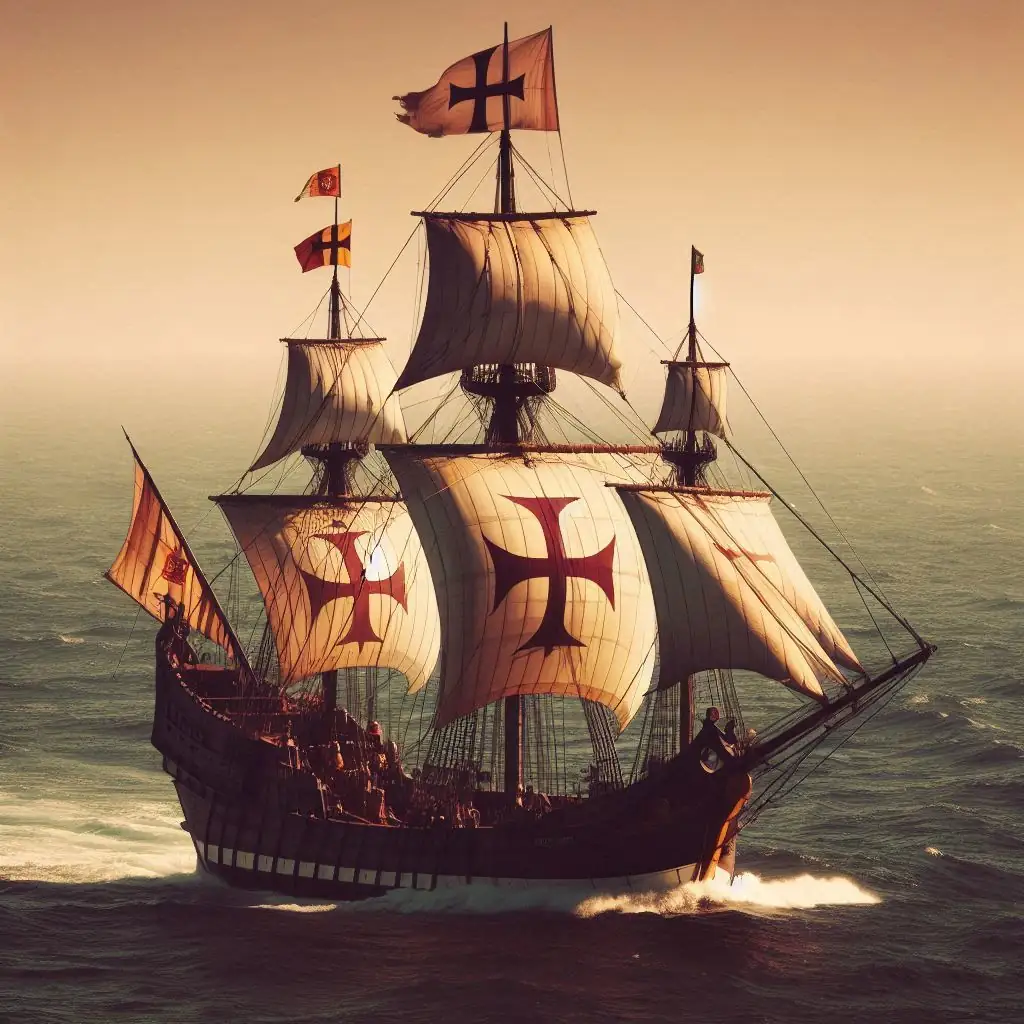The Portuguese caravel, a small, highly maneuverable sailing ship developed in the 15th century, played a pivotal role in the Age of Exploration. This ship was instrumental in Portugal’s success in exploring and mapping the coasts of Africa, Asia, and the Americas, opening new trade routes and establishing a global maritime empire. The caravel’s design and capabilities revolutionized navigation and had a profound impact on the world’s history.
Origins and Design
The caravel’s origins can be traced back to the early 15th century, during the reign of Prince Henry the Navigator. Portuguese shipbuilders sought to create a vessel that could navigate the treacherous waters of the Atlantic and explore uncharted territories. The result was the caravel, a ship that combined speed, agility, and the ability to sail windward, making it ideal for long voyages of discovery.
Caravels were typically small ships, measuring around 20 to 30 meters in length, with a narrow hull and a shallow draught. They were rigged with lateen sails, which are triangular and mounted at an angle on the masts. This sail configuration allowed the caravel to sail closer to the wind compared to other ships of the time, giving it a significant advantage in exploration.
Key Features of the Caravel
- Speed and Maneuverability: The caravel’s design allowed it to sail at high speeds and navigate through narrow and shallow waters. This made it possible for Portuguese explorers to venture into unknown territories and return with valuable information.
- Adaptability: The caravel’s rigging could be adjusted to suit different sailing conditions. It could be outfitted with square sails for open-sea voyages or lateen sails for coastal exploration. This versatility made it a preferred choice for long-distance expeditions.
- Durability: The caravel’s robust construction enabled it to withstand the harsh conditions of the Atlantic Ocean. Its sturdy hull and reinforced structure ensured the safety of the crew and the cargo during long voyages.
The Caravel’s Role in the Age of Exploration
The caravel played a central role in many of the key voyages of discovery during the Age of Exploration. Portuguese explorers, such as Bartolomeu Dias, Vasco da Gama, relied on the caravel to achieve their groundbreaking navigational feats.
- Bartolomeu Dias: In 1488, Dias became the first European to sail around the southern tip of Africa, the Cape of Good Hope, using caravels. This voyage opened the sea route to Asia and paved the way for future explorations.
- Vasco da Gama: In 1498, da Gama successfully reached India by sea, establishing a direct maritime route from Europe to Asia. His fleet of caravels played a crucial role in this historic journey, which marked the beginning of a new era in global trade and commerce.
- Christopher Columbus: Although Columbus was Italian, his historic voyage in 1492 was sponsored by Spain. He used three ships, including the famed caravel, the Niña, to sail across the Atlantic and discover the Americas. This event had a profound impact on the course of world history, leading to the exchange of cultures, ideas, and goods between the Old and New Worlds.
Impact on Global Trade and Exploration
The caravel’s influence extended beyond exploration. Its design and capabilities revolutionized global trade by enabling the establishment of new maritime routes. The Portuguese used caravels to transport goods such as spices, gold, and slaves, establishing a lucrative trade network that connected Europe, Africa, Asia, and the Americas.
The caravel’s ability to navigate shallow coastal waters also facilitated the establishment of colonial outposts and trading posts. Portugal’s maritime empire expanded rapidly, with caravels playing a vital role in the exploration and colonization of new territories. The ship’s versatility and reliability made it a symbol of Portuguese maritime prowess and a key instrument in shaping the modern world.
Conclusion
The Portuguese caravel was more than just a ship; it was a catalyst for change and a symbol of human ingenuity. Its design revolutionized navigation and exploration, allowing Portugal to lead the way in the Age of Exploration. The caravel’s impact on global trade, exploration, and colonization was profound, shaping the course of world history.
Today, the legacy of the caravel is still remembered and celebrated in Portugal. Museums, monuments, and cultural events pay tribute to this remarkable vessel and the explorers who sailed it. The caravel’s importance in shaping the world serves as a reminder of the enduring spirit of exploration and the quest for knowledge that continues to drive humanity forward.








